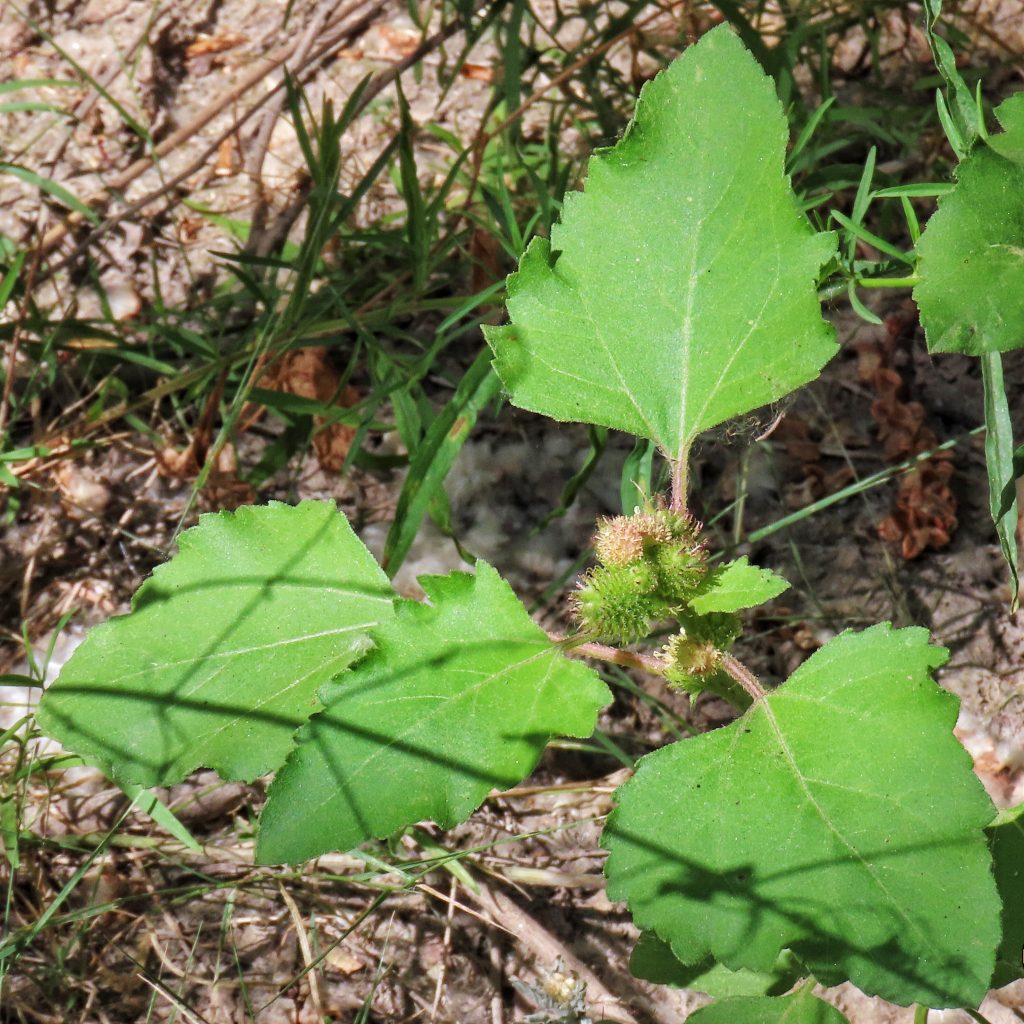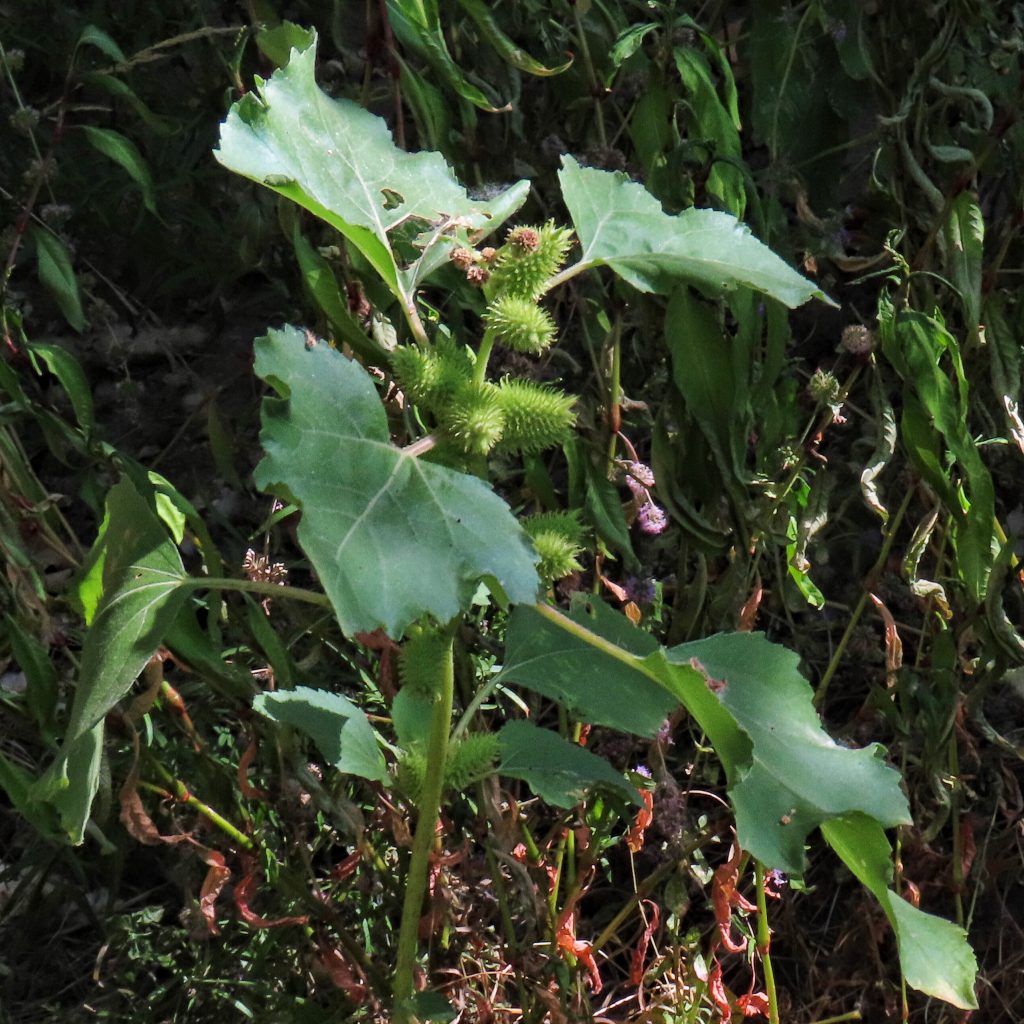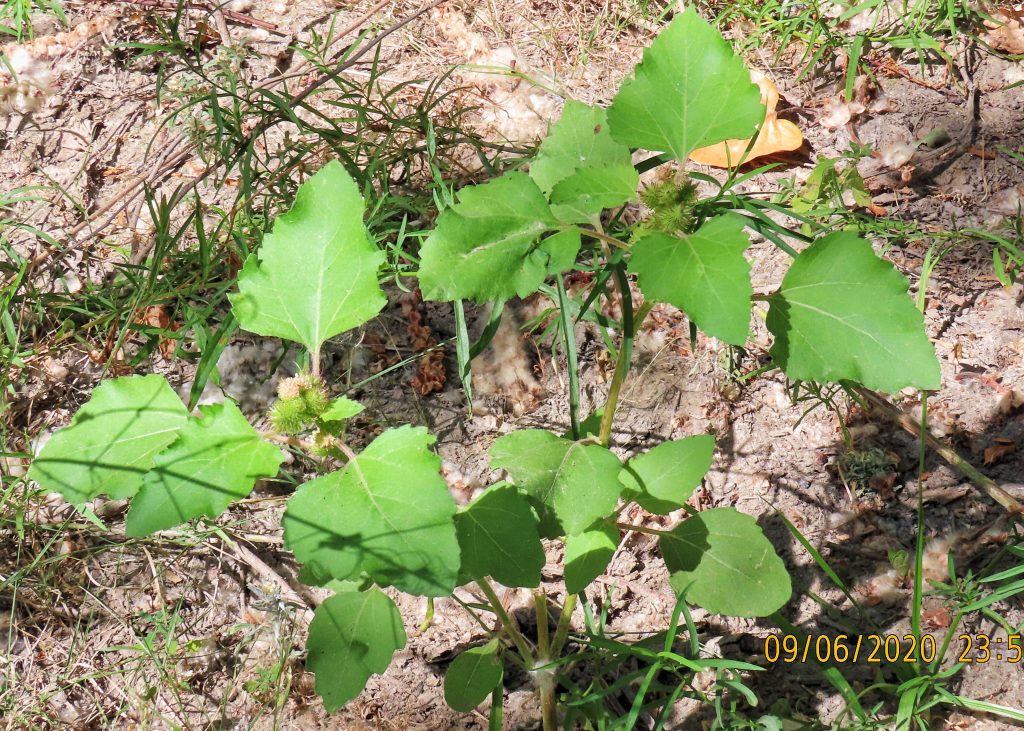
This is a tall (up to 5’), annual plant, with a stout, spotted, non-woody stem. The leaves are large, triangular, irregularly toothed or lobed, and are on long petioles. The flowers are tiny and short lived. They can just barely be seen in the photograph above. The seeds are encased by the eponymous oblong or round cockleburs, which form in clusters at the leaf and stem junctures.
Rough Cocklebur is native to our area, and has become naturalized world wide. It is common in our region in vernally wet, disturbed ground in lowland areas, although it is missing from most of the westside of Washington state, (although we have plenty of it in Clark County)and nw Oregon.
The larvae of several species of moths are known to be leaf miners or stem borers of Xanthium spp, but I can find no records of that in our area.The tumbling flower beetle Mordellistena liljebladi, Cylindrocopturus spp weevils, and several species of leaf miner flies in our region are known to use this plant as a larval host.
This plant is poisonous to mammals. In 2007 least 19 people in Bangladesh died from eating it when all other food supplies were destroyed in a monsoon flood. However the Zuni tribe of Native Americans crushed the seeds and made a wound poultice from them.
Xanthium comes from the Greek word xanthos, which means yellow, and alludes to the color of dye that was manufactured from this plant.

https://www.illinoiswildflowers.info/weeds/plants/cocklebur.htm
https://en.m.wikipedia.org/wiki/Xanthium_strumarium
Size- Up to 5’ tall
Habitat- Vernally damp, disturbed ground
Range- Region wide, except absent in most of western Washington and nw Oregon.
Blooms- Late summer
